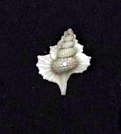
Primula pauciflora, the pretty shooting star, few-flowered shooting star, dark throat shooting star or prairie shooting star, is a species of flowering plant in the primula family Primulaceae. It is a widespread and very variable species, native to western North America, from Subarctic America to Mexico, often in xeric and desert habitats. It is found in the Great Basin Deserts and Mojave Desert. Its synonyms include Dodecatheon pauciflorum and Dodecatheon pulchellum.
Calyptridium pulchellum, synonym Cistanthe pulchella, is a rare species of flowering plant in the family Montiaceae. It is known by the common name Mariposa pussypaws. It is endemic to the Sierra Nevada foothills of central California, where it is known from only a few scattered occurrences. It grows on barren patches of granite gravel in woodland and grasslands. It is a federally listed threatened species.

Dendrobium moschatum, the musky-smelling dendrobium, is a species of orchid. It is native to the Himalayas, and Indochina.

Dendrobium pulchellum is an orchid is native to Southeast Asia. This stunning plant blooms from the completion of winter into early spring. This is due to Dendrobium requiring cooler temperatures for growth and development.
Buccinum pulchellum is a species of sea snail, a marine gastropod mollusk in the family Buccinidae, the true whelks.

Gyrineum pulchellum, common name the tiny winged frog shell, is a species of predatory sea snail, a marine gastropod mollusk in the family Cymatiidae.

Caecum pulchellum, common name the beautiful caecum, is a species of minute sea snail, a marine gastropod mollusk or micromollusk in the family Caecidae.
Anthidium pulchellum is a species of bee in the family Megachilidae, the leaf-cutter, carder, or mason bees.

Eranthemum pulchellum, the blue eranthemum or blue sage, is a species of flowering plant in the acanthus family Acanthaceae, native to the Himalayas, western China, India and Nepal. A strongly branched evergreen shrub, it is popular with gardeners because of the spikes of flowers that are bright gentian blue – an unusual color in the tropics. The flowers appear from green-and-white veined bracts that remain after the blooms fall, forming a column several centimetres long. The hairy leaves are large and dark green. A sprawling shrub which may reach a metre or more in height, E. pulchellum is usually kept lower and bushier through pruning. Light shade is preferred in a garden; in a greenhouse it needs warm conditions. It is easily propagated from cuttings.

Coleonema pulchellum, commonly known as confetti bush, buchu, diosma or breath of heaven, is a shrub which is endemic to the Cape Provinces of South Africa.
Dipodium pulchellum is an almost leafless orchid that is endemic to north-east New South Wales and south-east Queensland in Australia. Up to forty pink flowers with darker blotches are borne in summer and winter on flowering spikes up to 90 cm (40 in) long.

Allium carinatum, the keeled garlic or witch's garlic, is a bulbous perennial flowering plant in the family Amaryllidaceae. It is widespread across central and southern Europe, with some populations in Asiatic Turkey. It is cultivated in many places as an ornamental and also for its potently aromatic bulbs used as a food flavoring.

Leucojum aestivum, commonly called the summer snowflake, giant snowflake, Loddon lily and rarely snowbell and dewdrop among others, is a plant species widely cultivated as an ornamental. It is native to most of Europe from Spain and Ireland to Ukraine, with the exception of Scandinavia, Russia, Belarus and the Baltic countries. It is also considered native to Turkey, Iran and the Caucasus. It is naturalized in Denmark, South Australia, New South Wales, Nova Scotia and much of the eastern United States.

Sedum pulchellum is a species of flowering plant in the family Crassulaceae known by the common names widowscross and widow's cross. It is native to calcareous areas of the South-Central and Southeastern United States and where it is found on flat rock outcrops, particularly cedar glades. Most populations are in the Interior Low Plateau, and Ozark and Ouachita Mountains.

Maccaffertium pulchellum is a species of flatheaded mayfly in the family Heptageniidae. It is found in North America.

Orchelimum pulchellum, the handsome meadow katydid, is a species of meadow katydid in the family Tettigoniidae. It is found in North America.
Agathidium pulchellum is a species of round fungus beetle in the family Leiodidae. This species is one of the rarest of the genus Agathidium. It feeds exclusively on a slime mold species named Trichia decipens with mid-decayed aspen, spruce and birch logs in boreal forests. It is found only in natural forests where there is a ratio of at least 80 aspen and spruce logs per hectare. It was first discovered in 1971 in Blåkölen in Norrbotten, Sweden. A. pulchellum is considered an endangered species in Sweden, and Finland.

Sphaerolobium pulchellum is a species of flowering plant in the family Fabaceae and is endemic to the south-west of Western Australia. It is a more or less leafless shrub that typically grow to a height of 10–30 mm (0.39–1.18 in) and has pink or purple and yellow flowers in September and October.
Sphaeroma pulchellum is a species of isopod in the family Sphaeromatidae. It can be found in the Black Sea where it curls into small spheres on the sandy benthos.













